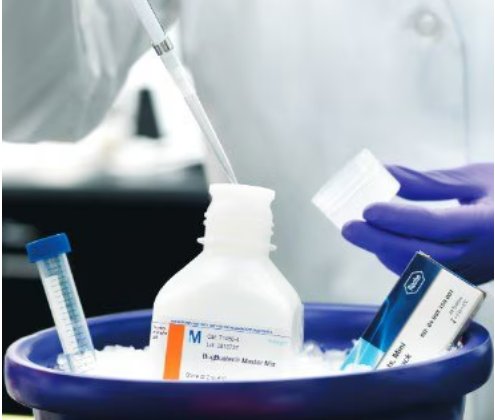 首页>
生物试剂
首页>
生物试剂
商家描述
售后服务
商家资质信息
产品评价(0)
Junctional adhesion molecule A (UniProt: Q9Y624; also known as JAM-A, Junctional adhesion molecule 1, JAM-1, Platelet F11 receptor, Platelet adhesion molecule 1, PAM-1, CD321) is encoded by the F11R (also known as JAM1, JCAM) gene (Gene ID: 50848) in human. JAM-A/F11R is a single-pass type I membrane protein that is localized at tight junctions of both epithelial and endothelial cells. It is also expressed in circulating platelets and leukocytes. It is synthesized with a signal peptide (aa 1-27), which is subsequently cleaved off to produce the mature form that contains an extracellular domain (aa 28-238), a transmembrane domain (aa 239-259), and a cytoplasmic domain (aa 260-299). The extracellular domain contains a membrane distal VH-type Ig-like domain (D1; aa 28-125) and a membrane proximal C2-type Ig-like domain (D2; aa 135-228) that contains a single glycosylation site (Asn 185). The cytoplasmic domain includes two phosphorylation sites (Tyr 280 and Ser 284) and also has a type II PDZ domain-binding motif (aa 297-299). JAM-A/F11R plays a role in epithelial tight junction formation and also regulates monocyte transmigration involved in integrity of epithelial barrier. It participates in the regulation of various biological processes, including paracellular permeability, tight junction formation and maintenance, leukocyte trans-endothelial migration, epithelial-to-mesenchymal transition (EMT), angiogenesis, reovirus binding, and platelet activation. Its dysregulation may contribute to pathological consequences, such as cardiovascular diseases, inflammatory bowel disease, neurological disorders, and various cancer types. In cancer cells, it is not only associated with regulation of cell migration, but it also affects apoptosis, EMT, cancer stem cell maintenance, and cell proliferation. Down-regulation of JAM-A/F11R results in elevated cell migration, invasion, and metastasis in various breast cancer cell lines. Its higher levels have been linked to reduced cell migration ability of cancer cells. (Ref.: Czubak-Prowizor, K., et al. (2022). Mol. Cell. Biochem. 477(1); 79-98; Liu, X., et al. (2020). Nature. 586(7827); 101-107).,官网链接:https://www.sigmaaldrich.cn/product/mm/mabt1541
默克
科研、开发、生产。
作为生命科学行业的全球领先供应商,我们致力于为科研、生物技术开发和生产,以及制药药物疗法开发和生产提供各类解决方案和服务。
 会员登录
会员登录.getTime()%>)
 购物车()
购物车()

 成功收藏产品
成功收藏产品
